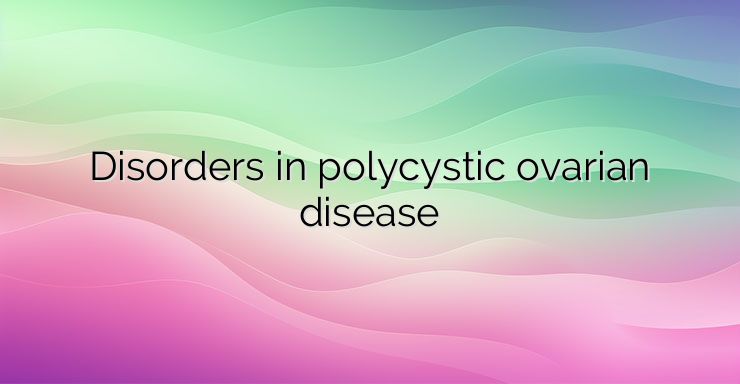Polycystic ovary disease is a disease in which multiple follicles are found to be present in them. The disease mainly occurs in women of reproductive age, and its frequency is about 5-10%. There are many reasons for the development of this condition, it is believed that it is based on increased levels of androgens. Androgens and estrogens are steroid hormones that are formed in the process of steroidogenesis from cholesterol. The transformation of androgens into estrogens is carried out by aromatase enzymes, disturbances in the formation of estrogens can lead to both a decrease in their level and increased levels of androgens. Elevated levels of androgens – hyperandrogenism is prevalent in women with polycystic ovary disease. This is an expression of increased synthesis of the luteinizing hormone in the female body. As a result, large amounts of androgens are formed, which cannot be completely transformed into estrogens. Complaints of women with polycystic ovarian disease 1. The main disorders in polycystic ovarian disease are related to menstrual disorders. Most often, these are cessation of menstruation – amenorrhea or oligomenorrhea – menstrual bleeding occurs at greater intervals. Hypermenorrhea can be observed very rarely. 2. Due to the increased levels of androgens, women with polycystic ovarian disease experience increased male pattern hair growth – hirsutism. Most often, hair growth is observed on the abdomen, around the areolas and on the face of a woman. Another manifestation of increased androgens can be the appearance of acne and oily hair. 3. Very often, women with polycystic ovarian disease have increased body weight, as well as impaired carbohydrate metabolism. An expression of these disorders is the development of metabolic syndrome. It is characterized by the development of obesity mainly in the abdominal area, dyslipidemia, increased blood pressure and impaired glucose tolerance. NEWS_MORE_BOX Complications that can occur with polycystic ovarian disease Most often, polycystic ovarian disease is diagnosed in women, in the course of establishing a reason for the inability to conceive. The development of the condition is associated with an increase in the total level of estrogens and a reduced synthesis of progesterone. For this reason, the long duration of the condition leads to an increase in the risk of developing endometrial carcinoma. Women with polycystic ovarian disease have an increased risk of developing type 2 diabetes mellitus. Making a diagnosis of polycystic ovarian disease For making a correct and accurate diagnosis, the woman’s complaints are important. When conducting an ultrasound examination, the presence of a large number of follicles in the ovaries can be detected, usually in order to make the diagnosis, it is necessary to detect the presence of more than 12 enlarged follicles in one ovary. To help make the diagnosis, a test of hormone levels can be carried out.Menstrual disorders, the manifestation of hirsutism and the characteristic echographic finding are important signs describing and determining the presence of the disease. Treatment of women with polycystic ovarian disease When the condition is diagnosed, hormone therapy is most often used to restore hormone levels in the female body and to regulate the relationship between hormones released by the hypothalamus and pituitary gland and ovarian hormones. Operative interventions are rarely used because there is a risk of affecting the ovary and its function.


Leave a Reply